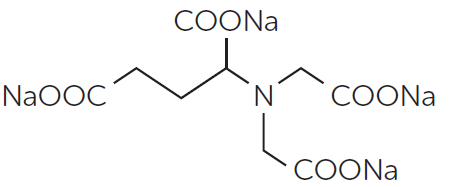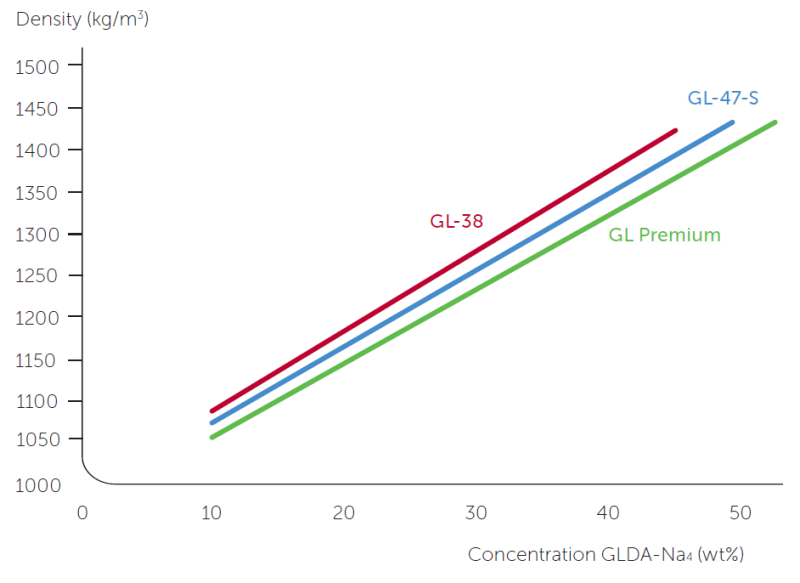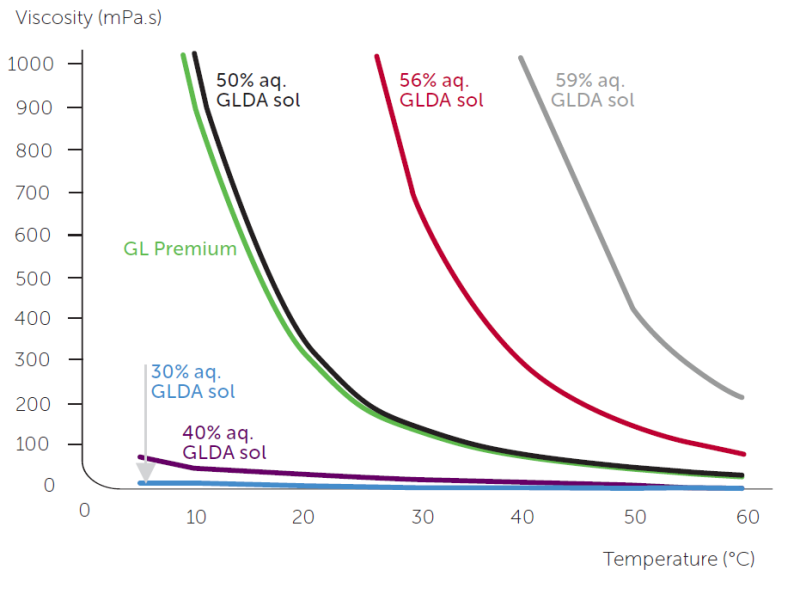Enhanced TDS
Identification & Functionality
- Chemical Name
- Cleaning Ingredients Functions
- Cosmetic Ingredients Functions
- Industrial Additives Functions
- Molecular formula
- GLDA - Na₄
- Technologies
- Product Families
- Chemical Structure

Features & Benefits
- Benefit Claims
- Labeling Claims
- HII Features
Applications & Uses
- Markets
- Applications
- Applicable Processes
- Home Care Applications
- I&I Cleaning Applications
- Product Applications
- Boosting agent for disinfecting products (with low skin irritation). Improved detergency at high water hardness.
- Hard surface cleaning performance is improved in combination with gluco(hepto)nates. Scale removal at high pH. Scale inhibitor in laundering and dishwashing applications.
- Booster for stain removal in dish washing detergents better than citrates and phosphates.
- Scum inhibitor in bathroom cleaners. Improved cleaning & foaming in shampoo applications.
- Storage stabilization of bleaching agents (perborates/percarbonates) and unsaturated alkyl chain-based surfactants.
- Transport cleaners: Oil and iron removal at slightly acidic, neutral or mild alkaline conditions. Replacement for NTA.
Properties
- Physical Form
- Appearance
- Clear liquid
- Odor
- Odorless
- Miscible in
- Water, low pH, ethylene glycol, 5M NaOH (at 20°C)
- Characteristics
Value Units Test Method / Conditions Crystallization Point max. -15 °C - Electro Conductivity approx. 4.75 mS/cm - Surface Tension Aqueous solution, no surface active components - - Viscosity (at 20°C) max. 250 mPa·s - - Specifications
Value Units Test Method / Conditions Molecular Weight 351.1 - - Assay (as GLDA-Na₄) 54.6 - 55.4 % - Chloride Content max. 0.05 mg/kg - Color max. 250 - APHA Density approx. 1500 kg/m³ - NTA-Na₃ Content max. 0.1 % - pH (at 1% w/v Dilution) 10.0 - 10,4 - - - Theoretical Properties
Value Units Test Method / Conditions Sequestering Values (Calcium ion, at pH 6 - 14) approx. 65 mg metal/g - Sequestering Values (Copper ion, at pH 2-12) approx. 100 mg metal/g - Sequestering Values (Ferric ion, at pH 2-8) approx. 80 mg metal/g - Sequestering Values (Magnesium ion, at pH 5-10) approx. 40 mg metal/g - Sequestering Values (Manganese ion, at pH 5-10) approx. 85 mg metal/g - Sequestering Values (Zinc ion, at pH 3-12) approx. 100 mg metal/g -
Technical Details & Test Data
- Density Data
Liquid density The density of the liquid can be used as a quick reference to check the concentration of the material. See Figure 1.
Figure 1: Density of Dissolvine® GL plotted against GLDA-Na4 concentration based on GL-38, GL-47-S and GL Premium.

- Viscosity Data
Viscosity is an important parameter for handling products and is dependent on concentration and temperature. Figure 2 shows the viscosity of various concentrations of GLDA-Na4 solutions as a function of temperature.
Figure 2: Graph of the viscosity of various concentrations of Dissolvine® GL at different temperatures compared to the viscosity of Dissolvine® GL Premium.

Packaging & Availability
Storage & Handling
- Storage & Retest Information
Store in original packing or in PVC, PP, PE, stainless steel or bituminized tanks. Avoid contact with aluminum, zinc, nickel, copper and copper alloys. It is advised to re-test the material after three years of storage.
